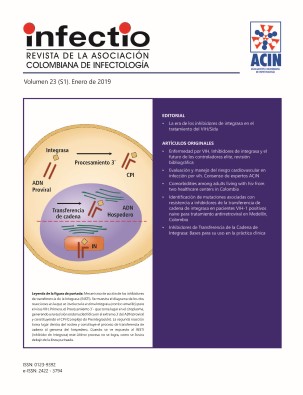Comorbidities among adults living with hiv from two healthcare centers in Colombia
Contenido principal del artículo
Resumen
Objective: To determine the prevalence of comorbidities among adults living with HIV from two healthcare centers in Colombia, and to identify factors associated with comorbidity-free years.
Methods: Observational, retrospective medical chart review study. Summary statistics for demographic and clinical characteristics were developed and relationship between comorbidity-free years were analyzed through Kaplan-Meier analysis and Cox regression.
Results: 669 clinical charts were included, 71.7% were male and 16.1% were 50 years or older, 69.96% had at least one comorbidity. The most frequent comorbidities were dislipidemia(15.06%), hypertension(5.67%), risk factors were tobacco use(15.33%), alcohol intake(24.36%) and drugs abuse (14.66%).
Discussion: These findings are consistent with previous reports showing the underlying processes of patients, producing multiple comorbidities.
Conclusions: Significant proportion of patients have comorbidities that may increase risk of other complications or reduced comorbidity-free years. Poly-pharmacy among HIV+ adults need to be addressed to ensure adherence and minimize drug-drug interactions.

